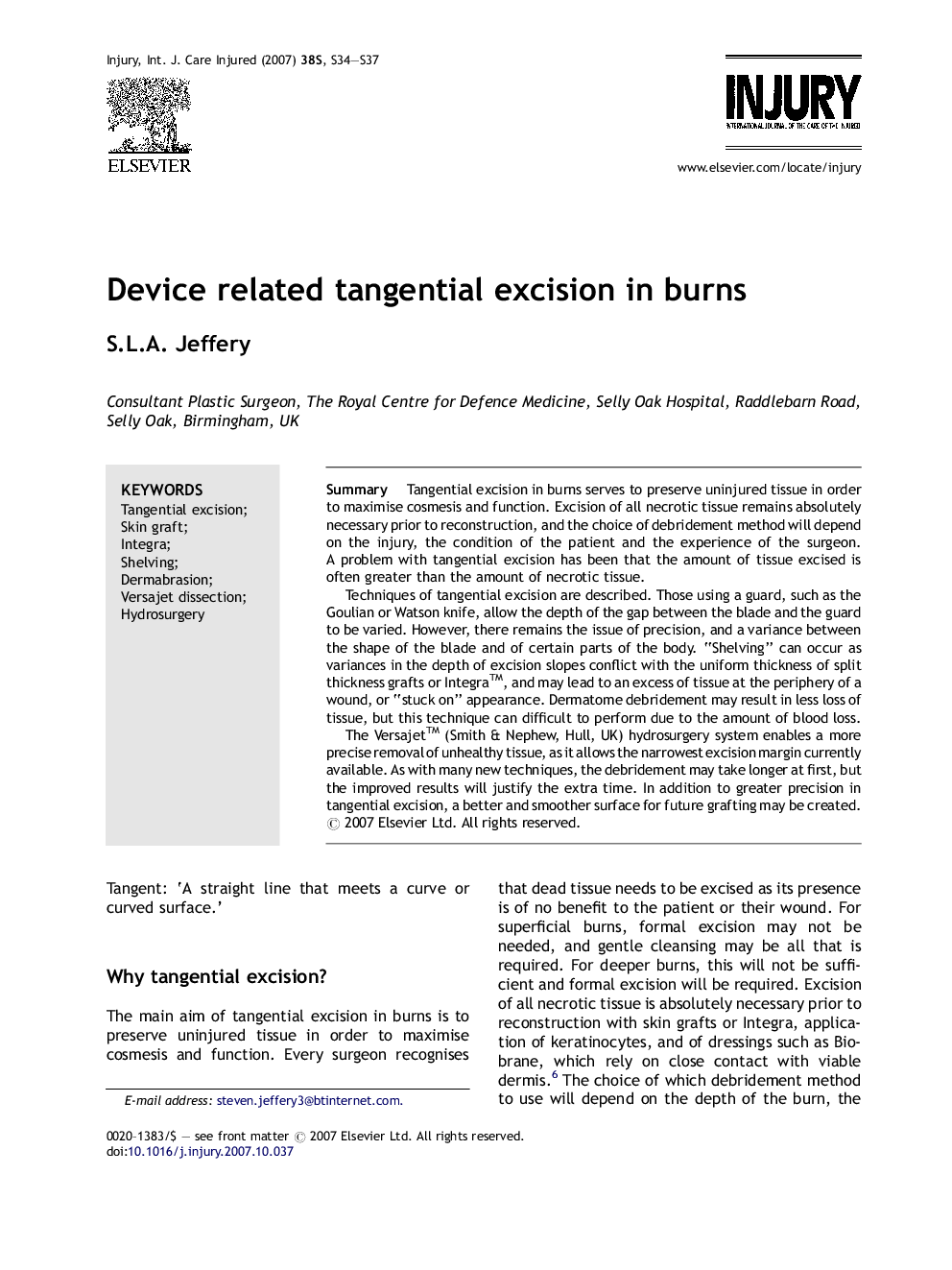| Article ID | Journal | Published Year | Pages | File Type |
|---|---|---|---|---|
| 3242494 | Injury | 2007 | 4 Pages |
SummaryTangential excision in burns serves to preserve uninjured tissue in order to maximise cosmesis and function. Excision of all necrotic tissue remains absolutely necessary prior to reconstruction, and the choice of debridement method will depend on the injury, the condition of the patient and the experience of the surgeon. A problem with tangential excision has been that the amount of tissue excised is often greater than the amount of necrotic tissue.Techniques of tangential excision are described. Those using a guard, such as the Goulian or Watson knife, allow the depth of the gap between the blade and the guard to be varied. However, there remains the issue of precision, and a variance between the shape of the blade and of certain parts of the body. “Shelving” can occur as variances in the depth of excision slopes conflict with the uniform thickness of split thickness grafts or Integra™, and may lead to an excess of tissue at the periphery of a wound, or “stuck on” appearance. Dermatome debridement may result in less loss of tissue, but this technique can difficult to perform due to the amount of blood loss.The Versajet™ (Smith & Nephew, Hull, UK) hydrosurgery system enables a more precise removal of unhealthy tissue, as it allows the narrowest excision margin currently available. As with many new techniques, the debridement may take longer at first, but the improved results will justify the extra time. In addition to greater precision in tangential excision, a better and smoother surface for future grafting may be created.
